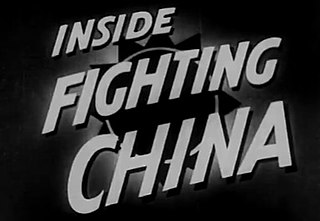
Inside Fighting China is a 1941 22-minute Canadian short documentary film produced by the National Film Board of Canada for distribution by United Artists, as part of the wartime The World in Action series. The film documents China's resistance to Japan's invasion during the Second World War. Inside Fighting China is directed by Stuart Legg, and narrated by Lorne Greene. The film's French version title is La Chine sous les armes.
Jane Marsh Beveridge was a Canadian director, producer, editor, composer, screenwriter, teacher and sculptor. She was best known as one of the pioneering filmmakers at the National Film Board of Canada (NFB).

Wasp Wings is a 42-minute 1945 Canadian documentary film made by the Royal Canadian Air Force (RCAF) Overseas Film Unit and the National Film Board of Canada (NFB). The film takes its name from the colourful markings known as invasion stripes that were painted on Supermarine Spitfire fighter aircraft on D-Day, making them look like "angry wasps".

Train Busters is a 13-minute 1943 Canadian documentary film, directed by Sydney Newman. The film was made by the Royal Canadian Air Force (RCAF) Overseas Film Unit and the National Film Board of Canada (NFB) as part of the NFB's Canada Carries On series. Train Busters depicts the Allied night bombing campaign over German-occupied Europe that was complemented by close air support missions flown by the RCAF targeting enemy trains.

Wings on Her Shoulder is a 10-minute 1943 Canadian documentary film, made by the National Film Board of Canada (NFB) as part of the NFB's The World in Action series. The film, directed by Jane Marsh, depicts the role of the Woman's Division in the Royal Canadian Air Force (RCAF) during the Second World War, who freed up men for flying duties.
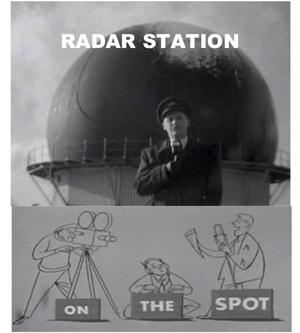
Radar Station is a 1953 Canadian short documentary film produced by the National Film Board of Canada (NFB) as part of the On The Spot series made specifically for television. The documentary involved an account of a visit to a radar station while it is involved in a simulated air attack, and is based on first-person interviews of the staff at the radar station.
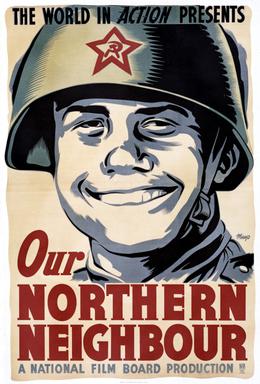
Our Northern Neighbour is a film produced in 1944 by Stuart Legg and directed by Tom Daly for the National Film Board of Canada series The World in Action. The film is narrated by broadcaster Lorne Greene.

The Home Front is a 10-minute 1940 Canadian documentary film, made by the National Film Board of Canada (NFB) as part of the wartime Canada Carries On series. The film was produced and directed by Stanley Hawes.
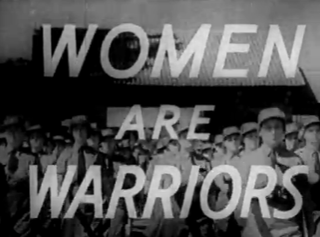
Women Are Warriors is a 14-minute 1942 Canadian documentary film, made by the National Film Board of Canada (NFB) as part of the wartime Canada Carries On series, and dealt with women in war. The film was produced by Raymond Spottiswoode and directed by Jane Marsh. The film's French version title is Les Femmes dans la mêlée.

Inside Fighting Canada is an 11-minute 1942 Canadian documentary film, made by the National Film Board of Canada (NFB) as part of the wartime Canada Carries On series. The film, directed by Jane Marsh and produced by James Beveridge, was an account of the Canadian military during the Second World War. The film's French version title is Canada en guerre.
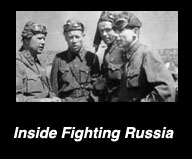
Inside Fighting Russia is a 1942 22-minute Canadian short documentary film produced by the National Film Board of Canada (NFB) for distribution by United Artists, as part of the wartime The World in Action series. The film documents Russia's fight against Nazi Germany during the Second World War. Inside Fighting Russia is produced by Stuart Legg, and narrated by Lorne Greene. The film's French version title is La Russie sous les armes.
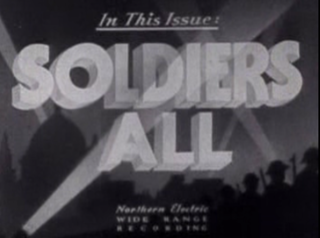
Soldiers All is a 20-minute 1941 Canadian documentary film, made by the National Film Board of Canada as part of the wartime Canada Carries On series. The film was produced by Stuart Legg. Soldiers All describes the experiences in 1941 of soldiers, airmen and sailors in Great Britain and Canada during wartime. The film's French version title is Frères d'armes.

The Gates of Italy is a 21-minute 1943 Canadian documentary film, made by the National Film Board of Canada as part of both the wartime Canada Carries On and The World in Action series. The film was produced by Stuart Legg and Tom Daly. The Gates of Italy describes the last days of Benito Mussolini's rule over Italy in 1943 during the Second World War.

The War for Men's Minds is a 21-minute 1943 Canadian documentary film, made by the National Film Board of Canada (NFB) as part of the wartime The World in Action series. The film was produced by Stuart Legg. The film describes the impact of propaganda from the Axis powers in 1943, during the Second World War. The French version title is À la conquête de l'esprit humain.

Letter from Overseas is a 15-minute 1943 Canadian documentary film, made by the National Film Board of Canada (NFB) as part of the wartime The World in Action series. The film describes the training and operational use of Canadian Army soldiers in 1943 during the Second World War.

Pincer on Axis Europe is a 20-minute 1943 Canadian documentary film, made by the National Film Board of Canada as part of the wartime Canada Carries On series. The film describes the Allied invasion of North Africa in 1942 during the Second World War.

Quebec – Path of Conquest is an 11-minute 1942 Canadian documentary film, made by the National Film Board of Canada as part of the wartime Canada Carries On series. The film was directed by Radford Crawley and produced by Raymond Spottiswoode. Quebec – Path of Conquest describes the importance of the province of Quebec to Canada and the Allied war effort during the Second World War. The film's French version title is Québec, tremplin stratégique.
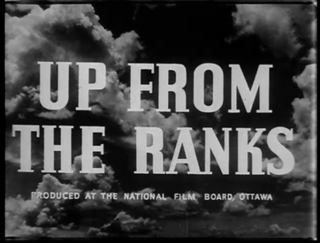
Up from the Ranks is a 19-minute 1943 Canadian docudrama film, made by the National Film Board of Canada (NFB) as part of the wartime Canada Carries On series. The film, directed by Julian Roffman and produced by Raymond Spottiswoode, described the training of Canadian Army officers to take on command responsibilities during the Second World War.

Air Cadets is a 15-minute 1944 Canadian documentary film, made by the National Film Board of Canada (NFB) as part of the wartime Canada Carries On series. The film describes the Air Cadet Movement in 1944 during the Second World War. Air Cadets was directed by Jane Marsh, who was also the writer and editor on the production. The film's French version title is Les Cadets de l'air.

The Battle of the Harvests is an 18-minute 1942 Canadian documentary film, made by the National Film Board of Canada (NFB) as part of the wartime Canada Carries On series. The film was produced by James Beveridge and directed by Stanley Jackson, who also provided the narration. The Battle of the Harvests shows how the farmers were mobilized worldwide in a battle of harvests to serve the fighting nations during the Second World War. The film's French version title was La Bataille des récoltes.



















